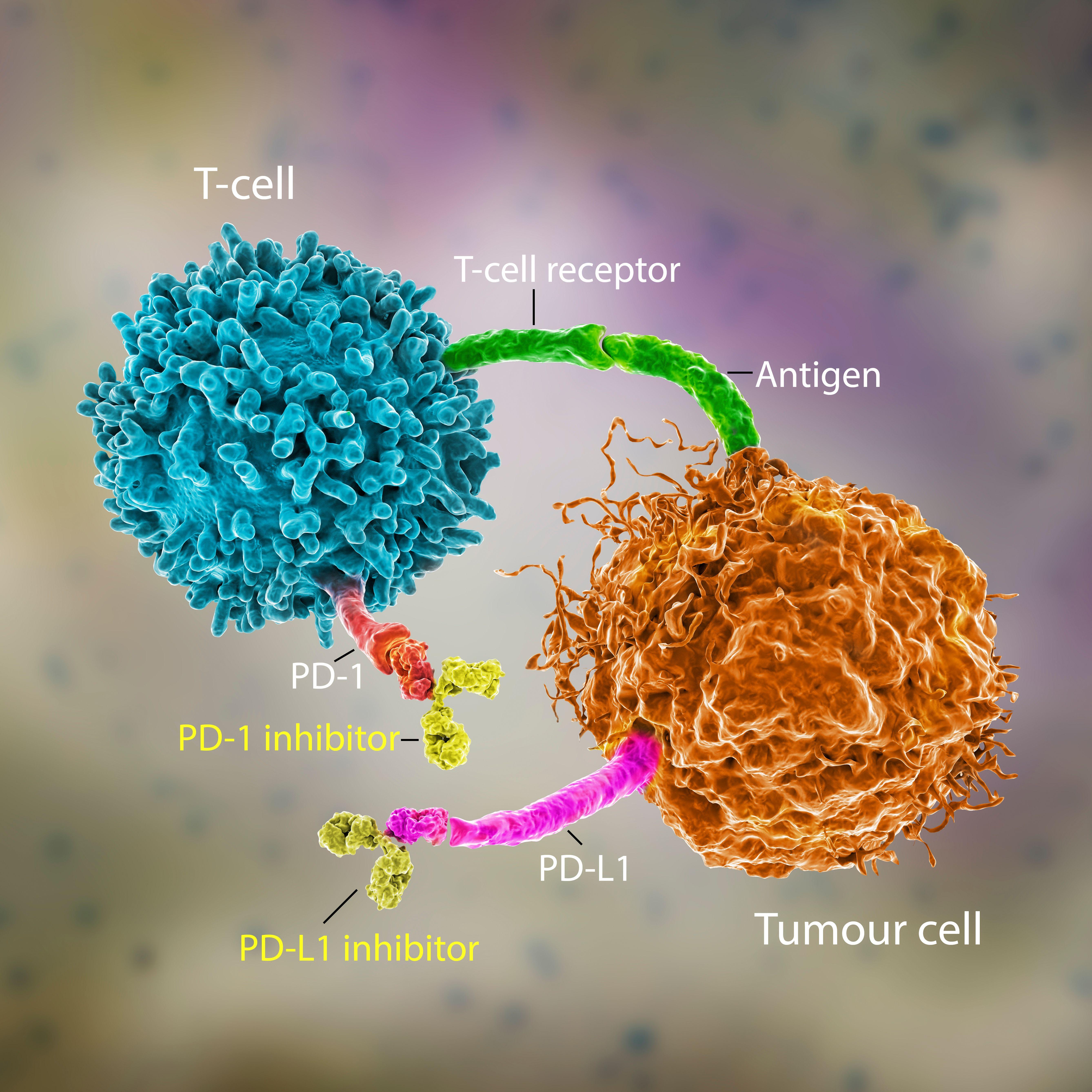PD-1/PD-L1 Inhibitors Market Outlook in Comparison to 2023 to 2033 Growth Forecast
The Global PD-1/PD-L1 Inhibitors Industry is on track for a significant surge, according to a recent market analysis. The market, currently valued at US$49.5 billion in 2023, is expected to skyrocket to a staggering US$123.3 billion by 2033, reflecting a robust Compound Annual Growth Rate (CAGR) of 9.6%.
Because of the growing worldwide cancer burden, the usage of PD-1 and PD-L1 inhibitors, which are essential immune checkpoint inhibitors used as front-line treatments for a variety of cancers, has increased significantly. Pembrolizumab (KEYTRUDA) is in high demand around the world due to its proven efficacy in treating a wide range of FDA-approved disorders. As a result, market participants are investing extensively in the development of these products, a trend that is expected to continue during the forecast period.
Request a Sample PDF of this Report
https://www.futuremarketinsights.com/reports/sample/rep-gb-12644
The increased R&D activities are projected to generate considerable growth potential for key competitors in the global PD-1/PD-L1 inhibitors industry.
Market participants, for example, are expanding their spending in research and development to fulfil increased demand.
Anti-PD-1 and anti-PD-L1 immunotherapies for patients with metastatic melanomas are being developed by researchers at Johns Hopkins Kimmel Cancer Centre. The therapy’s purpose is not to directly destroy cancer cells, but to disrupt a route that protects tumour cells from immune system components capable of fighting cancer.
Global PD-1/PD-L1 Inhibitors Industry Key Takeaways
The hospital pharmacies category is predicted to have a considerable market share of 48.3% over the projection period because of its vast client base, rising healthcare expenses, and rising cases of diseases such as lung and bladder cancer, melanoma, Hodgkin lymphoma, and others.
By 2033, the United States is expected to generate US$ 23.4 billion in revenue. The government is increasing funding and support for cancer drug development. A boom in market research and development for new and innovative pharmaceuticals is also supporting regional growth.
China is expected to be a lucrative market, with a 14.0% annual growth rate. The sale of approved therapies and the increasing occurrence of blood-related tumours are two of the key causes for the significant rise of the PD-1 and PD-L1 inhibitors market. Vendors’ rising patient support programmes are moving the market in this region ahead.
Pembrolizumab is expected to grow at an 8.7% annual pace throughout the forecast period, reaching a significant market share of 49.5% in 2022. Pembrolizumab’s use has expanded due to its established efficacy in treating FDA-approved indications such as head and neck squamous cell cancer (HNSCC), non-small cell lung cancer (NSCLC), melanoma, and others.
Tamil Nadu in India is developing a treatment policy to identify 66.0% of cancer patients in the first and second stages by 2030, allowing for proper treatment. As a result, such a policy is expected to fuel demand for PD-1 inhibitor drugs, propelling the growth of the segment over the forecast period
The Global PD-1/PD-L1 Inhibitors Industry is on track for a significant surge, according to a recent market analysis. The market, currently valued at US$49.5 billion in 2023, is expected to skyrocket to a staggering US$123.3 billion by 2033, reflecting a robust Compound Annual Growth Rate (CAGR) of 9.6%.
Because of the growing worldwide cancer burden, the usage of PD-1 and PD-L1 inhibitors, which are essential immune checkpoint inhibitors used as front-line treatments for a variety of cancers, has increased significantly. Pembrolizumab (KEYTRUDA) is in high demand around the world due to its proven efficacy in treating a wide range of FDA-approved disorders. As a result, market participants are investing extensively in the development of these products, a trend that is expected to continue during the forecast period.
Request a Sample PDF of this Report
https://www.futuremarketinsights.com/reports/sample/rep-gb-12644
The increased R&D activities are projected to generate considerable growth potential for key competitors in the global PD-1/PD-L1 inhibitors industry.
Market participants, for example, are expanding their spending in research and development to fulfil increased demand.
Anti-PD-1 and anti-PD-L1 immunotherapies for patients with metastatic melanomas are being developed by researchers at Johns Hopkins Kimmel Cancer Centre. The therapy’s purpose is not to directly destroy cancer cells, but to disrupt a route that protects tumour cells from immune system components capable of fighting cancer.
Global PD-1/PD-L1 Inhibitors Industry Key Takeaways
The hospital pharmacies category is predicted to have a considerable market share of 48.3% over the projection period because of its vast client base, rising healthcare expenses, and rising cases of diseases such as lung and bladder cancer, melanoma, Hodgkin lymphoma, and others.
By 2033, the United States is expected to generate US$ 23.4 billion in revenue. The government is increasing funding and support for cancer drug development. A boom in market research and development for new and innovative pharmaceuticals is also supporting regional growth.
China is expected to be a lucrative market, with a 14.0% annual growth rate. The sale of approved therapies and the increasing occurrence of blood-related tumours are two of the key causes for the significant rise of the PD-1 and PD-L1 inhibitors market. Vendors’ rising patient support programmes are moving the market in this region ahead.
Pembrolizumab is expected to grow at an 8.7% annual pace throughout the forecast period, reaching a significant market share of 49.5% in 2022. Pembrolizumab’s use has expanded due to its established efficacy in treating FDA-approved indications such as head and neck squamous cell cancer (HNSCC), non-small cell lung cancer (NSCLC), melanoma, and others.
Tamil Nadu in India is developing a treatment policy to identify 66.0% of cancer patients in the first and second stages by 2030, allowing for proper treatment. As a result, such a policy is expected to fuel demand for PD-1 inhibitor drugs, propelling the growth of the segment over the forecast period
PD-1/PD-L1 Inhibitors Market Outlook in Comparison to 2023 to 2033 Growth Forecast
The Global PD-1/PD-L1 Inhibitors Industry is on track for a significant surge, according to a recent market analysis. The market, currently valued at US$49.5 billion in 2023, is expected to skyrocket to a staggering US$123.3 billion by 2033, reflecting a robust Compound Annual Growth Rate (CAGR) of 9.6%.
Because of the growing worldwide cancer burden, the usage of PD-1 and PD-L1 inhibitors, which are essential immune checkpoint inhibitors used as front-line treatments for a variety of cancers, has increased significantly. Pembrolizumab (KEYTRUDA) is in high demand around the world due to its proven efficacy in treating a wide range of FDA-approved disorders. As a result, market participants are investing extensively in the development of these products, a trend that is expected to continue during the forecast period.
Request a Sample PDF of this Report
https://www.futuremarketinsights.com/reports/sample/rep-gb-12644
The increased R&D activities are projected to generate considerable growth potential for key competitors in the global PD-1/PD-L1 inhibitors industry.
Market participants, for example, are expanding their spending in research and development to fulfil increased demand.
Anti-PD-1 and anti-PD-L1 immunotherapies for patients with metastatic melanomas are being developed by researchers at Johns Hopkins Kimmel Cancer Centre. The therapy’s purpose is not to directly destroy cancer cells, but to disrupt a route that protects tumour cells from immune system components capable of fighting cancer.
Global PD-1/PD-L1 Inhibitors Industry Key Takeaways
The hospital pharmacies category is predicted to have a considerable market share of 48.3% over the projection period because of its vast client base, rising healthcare expenses, and rising cases of diseases such as lung and bladder cancer, melanoma, Hodgkin lymphoma, and others.
By 2033, the United States is expected to generate US$ 23.4 billion in revenue. The government is increasing funding and support for cancer drug development. A boom in market research and development for new and innovative pharmaceuticals is also supporting regional growth.
China is expected to be a lucrative market, with a 14.0% annual growth rate. The sale of approved therapies and the increasing occurrence of blood-related tumours are two of the key causes for the significant rise of the PD-1 and PD-L1 inhibitors market. Vendors’ rising patient support programmes are moving the market in this region ahead.
Pembrolizumab is expected to grow at an 8.7% annual pace throughout the forecast period, reaching a significant market share of 49.5% in 2022. Pembrolizumab’s use has expanded due to its established efficacy in treating FDA-approved indications such as head and neck squamous cell cancer (HNSCC), non-small cell lung cancer (NSCLC), melanoma, and others.
Tamil Nadu in India is developing a treatment policy to identify 66.0% of cancer patients in the first and second stages by 2030, allowing for proper treatment. As a result, such a policy is expected to fuel demand for PD-1 inhibitor drugs, propelling the growth of the segment over the forecast period
0 Commentarios
·0 Acciones
·200 Views
·0 Vista previa




